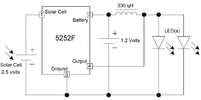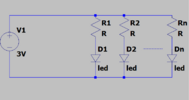Hi guys, I have 6 sets of solar lights in my outdoor area (aliexpress), each has its own solar panel/battery unit, for two years they all worked great now only one works. Rather than replace all the batteries I thought I would be better off wiring them into my shed where I have AC mains and use a DC wall plug.
The battery in each are the same, a single 1.2v 800mah nimh.
Is it true I will actually need a 3v output to drive these? Also will that risk burning them out since they are used to 3v alternating? I will also lose the different modes - flashing/pulsing etc and the auto on at dusk, I can use a timer for that though.
Anything else I need to consider?
The battery in each are the same, a single 1.2v 800mah nimh.
Is it true I will actually need a 3v output to drive these? Also will that risk burning them out since they are used to 3v alternating? I will also lose the different modes - flashing/pulsing etc and the auto on at dusk, I can use a timer for that though.
Anything else I need to consider?


